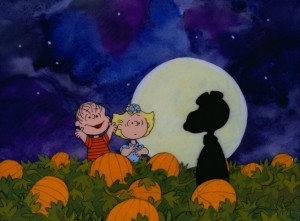 After a year’s worth of anticipation, amped up slowly over the last few months, October is upon us, and with it, Halloween just around the corner. To begin the celebration I refer readers back to a few notable posts of the past related to the holiday.
After a year’s worth of anticipation, amped up slowly over the last few months, October is upon us, and with it, Halloween just around the corner. To begin the celebration I refer readers back to a few notable posts of the past related to the holiday.
First, is an interview with Jack Santino who has researched the history of Halloween. This is an interesting post that corrects much of the misunderstanding surrounding the origins and continuing evolution of the holiday. Read “Jack Santino: Halloween, Folklore, and Death Festivals” here.
Next up is another interesting interview, this one with an author of a book that addresses the collection of Halloween memorabilia. Read “Vintage Halloween Memorabilia: Mark Ledenbach Interview” here.
Then, consider Walt Disney’s impact upon the formation of America’s Halloween mythos in “Disney’s Contributions to Halloween Mythology” here.
Finally, one of the most popular posts last year, and surprisingly so, was one which listed a number of my favorite and formative Halloween animated classics. You can read about this in “Halloween Animation Offerings” here.
Enjoy the season.





I was surprised to see that Jack Santino apparently was not aware of Ronald Hutton’s Seasons of the sun, or does he deal with and refute Hutton’s arguments in his book?
I need to revisit Santino on that. If memory serves he does not engage Hutton’s material.
For someone who writes books on it, he seemed remarkably ignorant of its historical origins, though I’m probably even more ignorant of its place in popular culture in North America.
In my experience there are four aspects to it
1. Online articles from Evangelicals saying it is pagan and therefore evil.
2. Online articles from neopagans and fluffy new age journalists saying it is pagan and therefore good.
3. A few posters advertising adult fancy dress parties.
4. An increase in the number of “slasher” movies on TV.
I gather that in North American culture Halloween is seen as something primarily concerning children, and none of those four points have anything much to do with children. The first two interest me from the point of view of church history — that history is distorted by some Christian and non-Christian groups for the purpose of making propagandea in their culture wars.
The fourth, which is more in line with the purpose of this blog, I should think, interests me, because it raises the question why popular culture, in South Africa at least, regards “slasher” movies as being in keeping with the spirit of Halloween. I don’t regard them as horror movies. If there were zombies, ghosts, evil spirits, yes. But they seem to concentrate mainly on purely human evil.
Thanks for your further thoughts, Steve. If you combine Santino’s book with David J. Skal’s “Death Makes a Holiday: A Cultural History of Halloween,” and Nicholas Rogers’ “Halloween: From Pagan Ritual to Party Night,” and then throw in Hutton’s treatment of the topic, you come away with a good overview of its cultural origins and evolution through history and cultures. As to its North American expressions, of course it has evolved, with a connection to Universal horror movies in the 1950s-1970s and a shift to the slasher film emphasis in the 1980s and 1990s. I don’t care much for these films either, but they do say a lot about American culture and its exertanlization of fear.